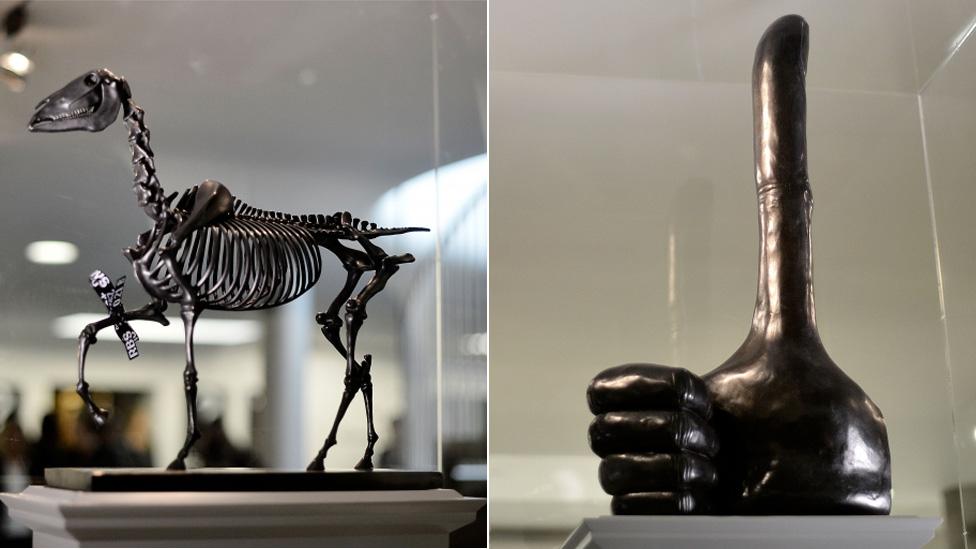Trafalgar Square Fourth Plinth: Winning design a 'litmus test' for society
- Published
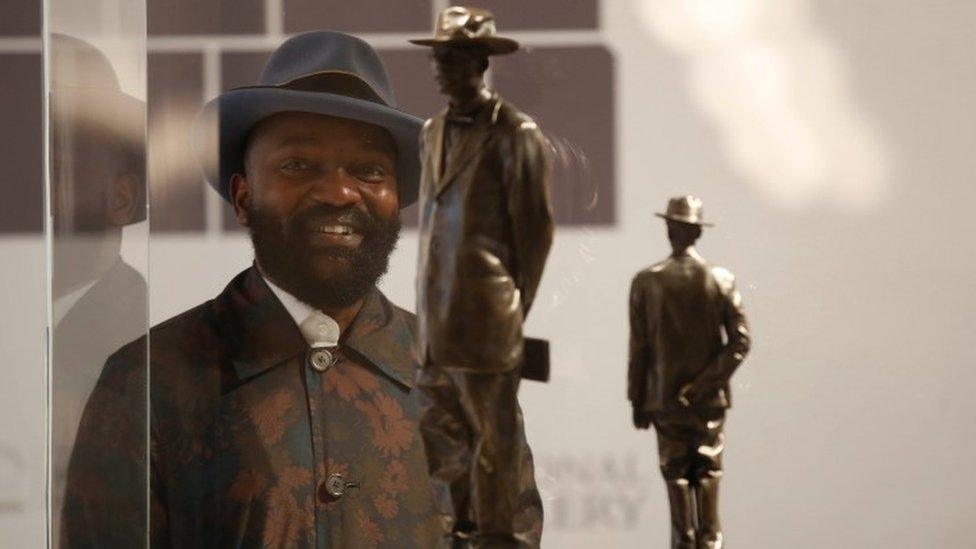
Samson Kambalu said he proposed his design before the Black Lives Matter protests were held last year
An artist whose design has been chosen for Trafalgar Square's Fourth Plinth has said it is a "litmus test" for how much he belongs to British society.
Malawi-born Samson Kambalu's sculpture Antelope, depicts a 1914 photograph of Baptist preacher John Chilembwe and European missionary John Chorley.
It has been chosen alongside Teresa Margolles's sculpture which features casts of the faces of 850 trans people.
They will go on display in 2022 and 2024 respectively.
Mr Kambalu said the original picture his artwork was based on "looks ordinary" at a first glance.
"But when you research the photograph, you find that actually there's subversion there, because at that time in 1914 it was forbidden for Africans to wear hats before white people," he said.
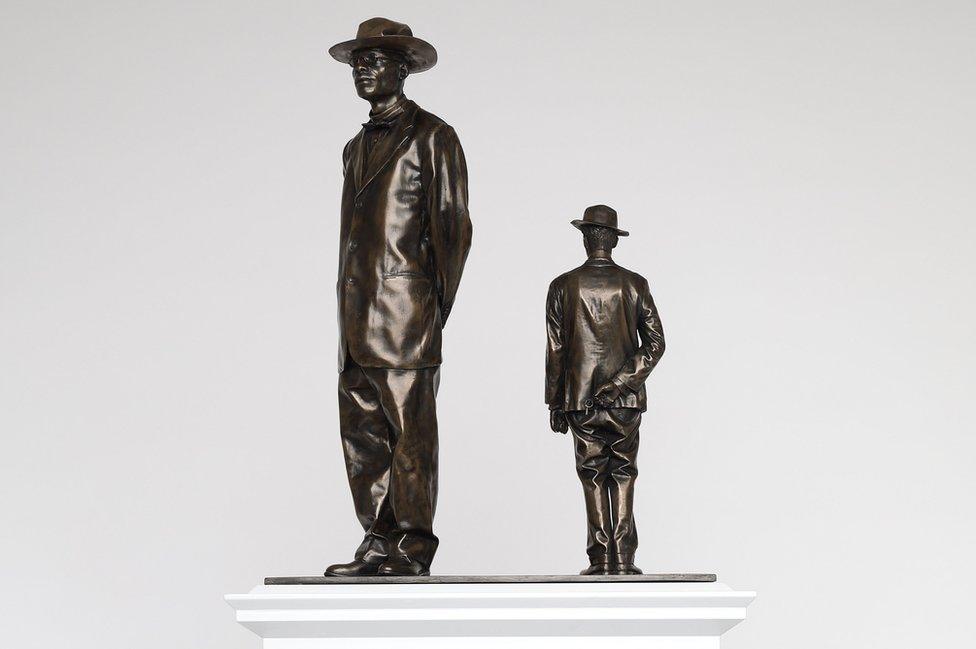
It restages a 1914 photograph of Baptist preacher and pan-Africanist John Chilembwe and European missionary John Chorley
In his design, Chilembwe is larger than life while Chorley is life-size. The judges said by increasing his scale, the artist elevated Chilembwe and his story, revealing the hidden narratives of underrepresented people in the history of the British Empire in Africa and beyond.
Black Lives Matter
"For me, the Fourth Plinth and my proposals were always going to be a litmus test for how much I belong to British society as an African and as a cosmopolitan, and so this fills me with joy and excitement."
He added: "When I proposed, this was before Black Lives Matter and George Floyd had been taken into the mainstream and I thought I was just going to be like the underdog, because I had made up my mind that I was going to propose something meaningful to me as an African.
"But we have to start putting detail to the black experience, we have to start putting detail to the African experience, to the post-colonial experience."
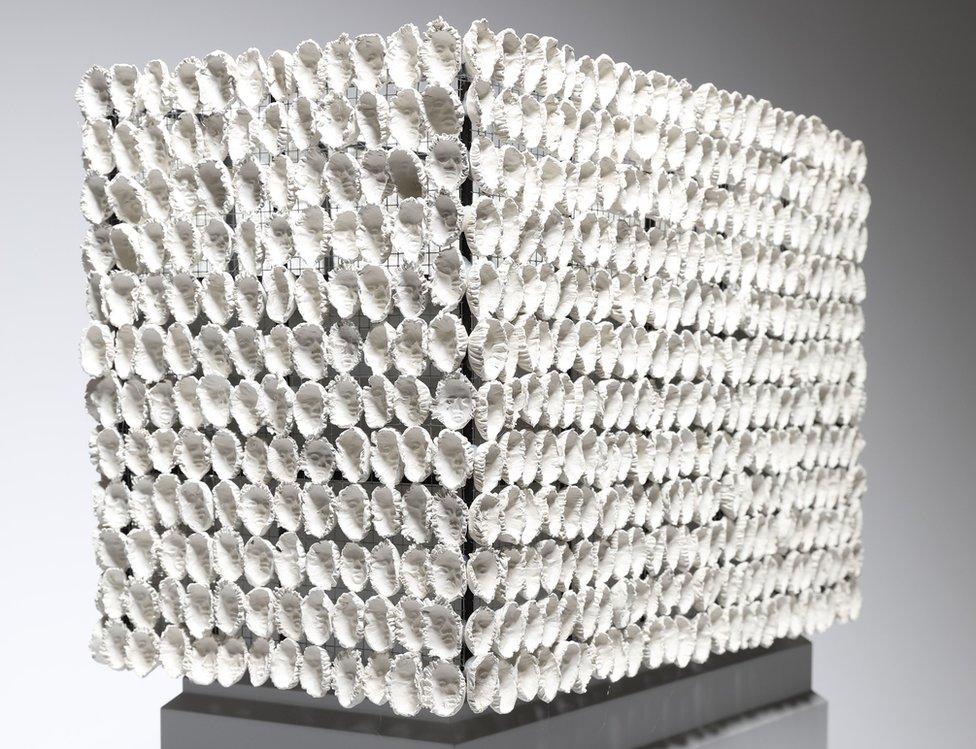
Teresa Margolles' work features casts of the faces of 850 trans people, most of whom are sex workers
Mr Kambalu and Ms Margolles's artworks were chosen after nearly 17,500 people voted for their favourite.
The artworks were selected by the Fourth Plinth Commissioning Group alongside entries from artists Paloma Varga Weisz, Ibrahim Mahama, Goshka Macuga and Nicole Eisenmans.
Ms Margolles's winning sculpture 850 Improntas will see "life masks" arranged around the plinth in the form of a tzompantli, a skull rack from Mesoamerican civilisations.
Mayor of London Sadiq Khan congratulated both artists and added they would be "shining a spotlight on important issues that our society continues to face, and I know they will spark debate and interest at home and abroad."

THE END by Heather Phillipson is the current artwork on display
The central London landmark has been home to a rolling commission of artworks since 1998.
The most recent Fourth Plinth commission, Heather Phillipson's sculpture The End, will remain on show until September 2022.
Past commissions also include Marc Quinn's sculpture of pregnant Alison Lapper, and Yinka Shonibare's scaled-down replica of HMS Victory, contained in a glass bottle.
Related topics
- Published24 May 2021
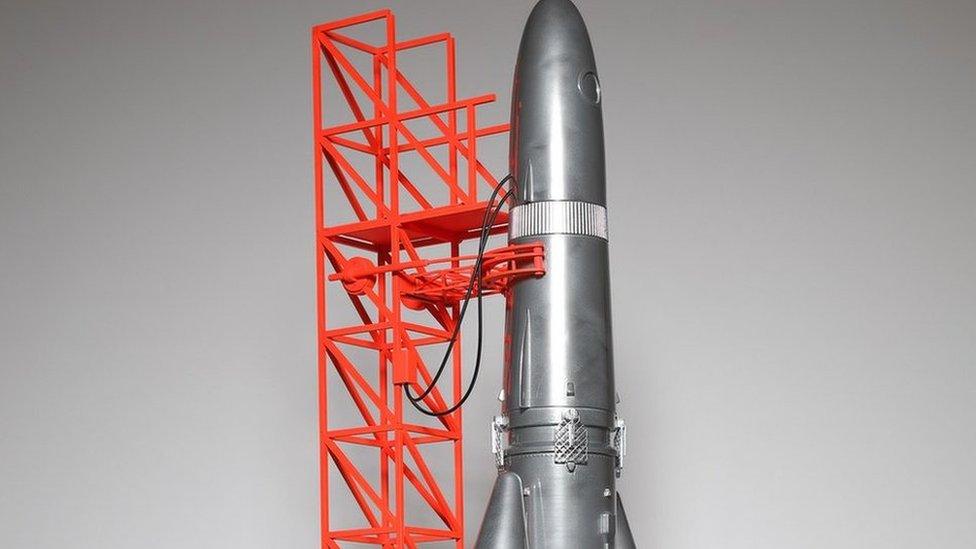
- Published7 January 2020
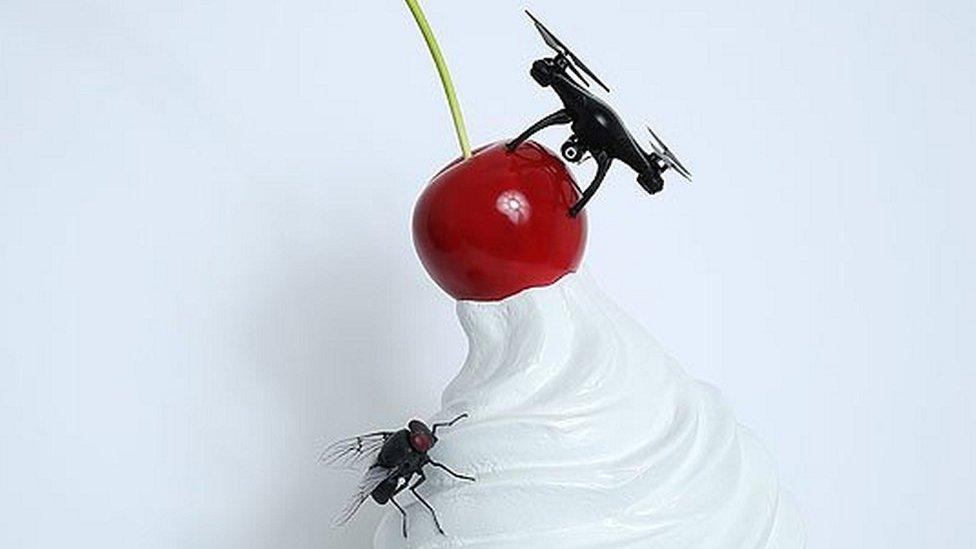
- Published21 March 2017

- Published29 September 2016
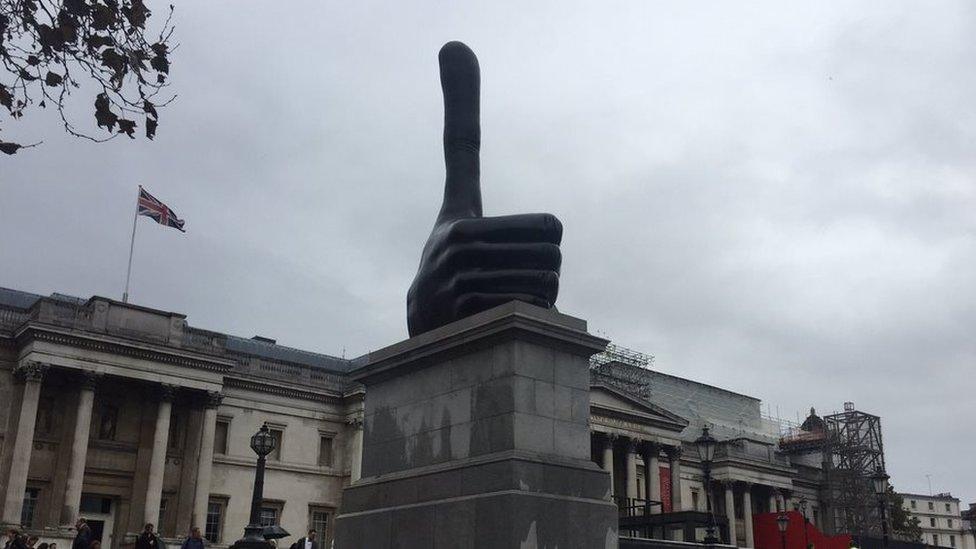
- Published25 July 2013
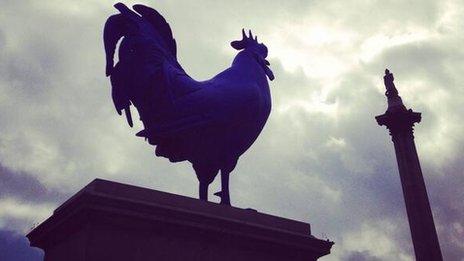
- Published7 February 2014
